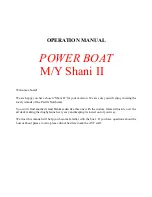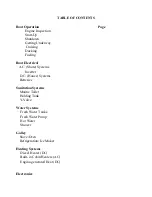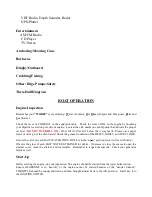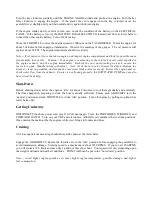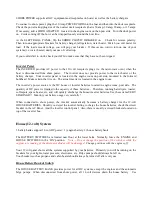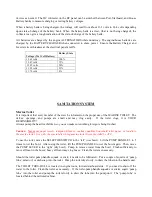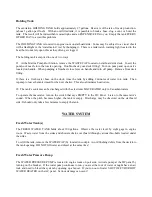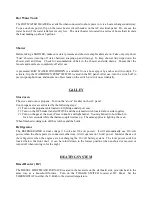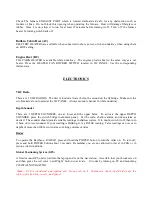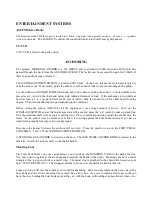
devices as needed. The DC voltmeter on the DC panel can be switched between Port, Starboard, and House
Battery banks to measure charging or resting battery voltages.
When a battery bank is being charged, the voltage will read from about 13.1 volts to 14.4 volts depending
upon state-of-charge of the battery bank. When the battery bank is at rest, (that is, not being charged), the
voltmeter can give a rough indication of the state-of-charge of the battery bank.
All batteries are charged by the engine ALTERNATORS while underway. The engine/house batteries are
charged by the BATTERY CHARGER when connected to shore power. Ensure the Battery Charger and
Inverter circuit breakers at the electrical panel are ON.
Voltage (Wet Cell Battery)
Battery State
12.65 volts
100%
12.47 volts
75%
12.25 volts
50%
11.95 volts
25%
11.70 volts
0%
SANITATION SYSTEM
Marine Toilet
It is important that every member of the crew be informed on the proper use of the MARINE TOILET. The
valves, openings, and pumps are small and may clog easily. If the toilet clogs, it is YOUR
RESONSIBILITY!
Always pump the head for children, so you can make sure nothing foreign is being flushed.
Caution – Never put paper towels, tampons, Kleenex, sanitary napkins, household toilet paper, or food into
the marine toilet. Use only the special dissolving marine toilet tissue provided by AYC.
To use the toilet, move the SELECTOR SWITCH to the ‘left’ (wet bowl). Lift the PUMP HANDLE 3 to 5
times to wet the bowl. After using the toilet, lift the PUMP HANDLE to wet the bowl again. Then, move
the PUMP LEVER to the ‘right’ (dry bowl). Pump to remove water from the bowl. Flush sufficiently to
move effluent in the hoses; heavy effluent may clog hoses. Clean the toilet as necessary.
Should the toilet pump handle squeak or stick, it needs to be lubricated. Put a couple of squirts of ‘pump
lube’, salad oil, or dish soap into the toilet. Pump the toilet dry slowly, to draw the lube into the handle unit.
The TOILET THRU-HULL is located in engine room, forward starboard side. If you need to shut off the
water to the toilet. Clean the toilet as necessary. If the toilet-pump handle squeaks or sticks, squirt ‘pump
lube’ into the toilet and pump the toilet slowly to draw the lube into the pump unit. The ‘pump lube’ is
located behind the mirrored cabinet.

